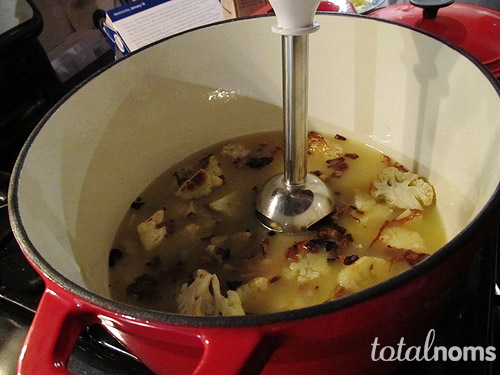Will it blend? That’s a question most of us have inevitably asked ourselves when making smoothies, piña coladas or protein shakes.
No one wants to venture out to pick up a blender, only to discover it’s not capable of crushing ice or mincing vegetables.
Ideally, we all want something that’s capable of delivering power when we need it. Sure, we’re probably spoiled from watching iPhones get blended on the popular online show Blendtec’s ‘Will It Blend?’ – but different types of blenders complete different types of tasks.
Chopping blades will slice up your ingredients, processing functions on standard blenders will blend/puree/stir, and ice-crushing blades will…crush ice. Some blenders, (like the Blendtec 625 Blender) will attempt to do all of the above. These all-in-one blenders can get costly however, and may not be what you need.
Blender Types
The standard types of blenders consist of countertop, personal and immersion.
Countertops are what you should look into for your standard blending needs. Margaritas, juicing or an occasional milkshake; this is what you need. These can range from standard to professional, so prices can vastly vary.
Personal blenders are recognizable from names like the Magic Bullet; small, compact and easily portable. The personal blender goes best with the individual interested in making quick vegetable juices or smoothies in high frequency. These are likely to come with added containers or even have a blending container that doubles as a portable one.
If you’re a soup, gravy or sauce maker, an immersion blender is the right one for you. It can’t replace a regular countertop-blender, but it will let you get right in there with a lot of power to iron out the lumps, kind of like an electric hand-mixer. This means you can blend in the pot, bowl or container and there’s very little clean up in terms of the blending unit itself.

An immersion blender eliminates a lot of clean up during cooking. (via Creative Commons)
Features
500 watts is generally considered the sweet spot for most people. However, you can find blenders ranging from 300 to a seemingly extra-ordinary 1,500 watts and beyond. For example, the aforementioned Blendtec Blender is a whopping 1,560 watts. While you may want higher wattage depending on the job (ice crushing and milkshakes can be the most taxing on the motors), don’t be fooled into thinking raw power will be better every time.
Blade type/shape and well as container type play a factor in the quality of blending. Some blades are curved or made specifically for pureeing or mixing. Higher-quality containers can have inner-ridges to force ingredients towards the blade. Therefore, don’t get mesmerized by the available speeds when price checking.

Make sure you know which blade type you need. (via Creative Commons)
You’ll want to look for anywhere between three and 10 functions. More functions generally means a higher price. Go too low and you might not get the features that are most important to your needs. Go over 10 or so, and the difference between functions might be negligible.
You’ll also notice price changes in relation to accessories like glass or plastic jugs, measuring cups and portable/re-sealable containers. While glass containers are breakable and heavier, they are also easier to clean than plastic, which can sometimes stain or absorb odors.
Some features you may want to look out for are things like tampers (to push contents down and mix thick substances), a pulse setting (to prevent over-processing/mixing) and pouring spouts on the container.
Warranty
The next and maybe most important item on the checklist is your warranty. Are you a frequent blender trying to make your own show? Or are you making the occasional smoothie for guests or a treat?
This may be the difference in the necessity for a one, five or 10-year warranty. Warranty length will also play a factor in price, so be sure you know what you’re getting into. When higher, blender horsepower (yes it’s a thing) in general will mean a longer-lasting motor. A motor with higher horsepower is less likely to fall apart when used consistently at higher speeds.
Overall, consider your likelihood of buying another blender, and when, in regards to your warranty.
The Sound of Silence
Last but not least, there is certainly only one way to find out how loud a blender is; a test. Hopefully there’s a floor model for you to test out, or maybe a friendly patron will let you plug one in.
Otherwise, read some reviews; it should be top of mind of anyone who made the mistake of buying an especially noisy blender.
Be a friend, and don’t forget to write your own review after you make your purchase!
Have a suggestion for a cool product or great deal that you think Daily Caller readers need to know about? Email our BrightBulb Team at dealer@dailycaller.com.
The Daily Caller is devoted to showing you things that you’ll like or find interesting. We do have partnerships with affiliates, so The Daily Caller may get a small share of the revenue from any purchase.


